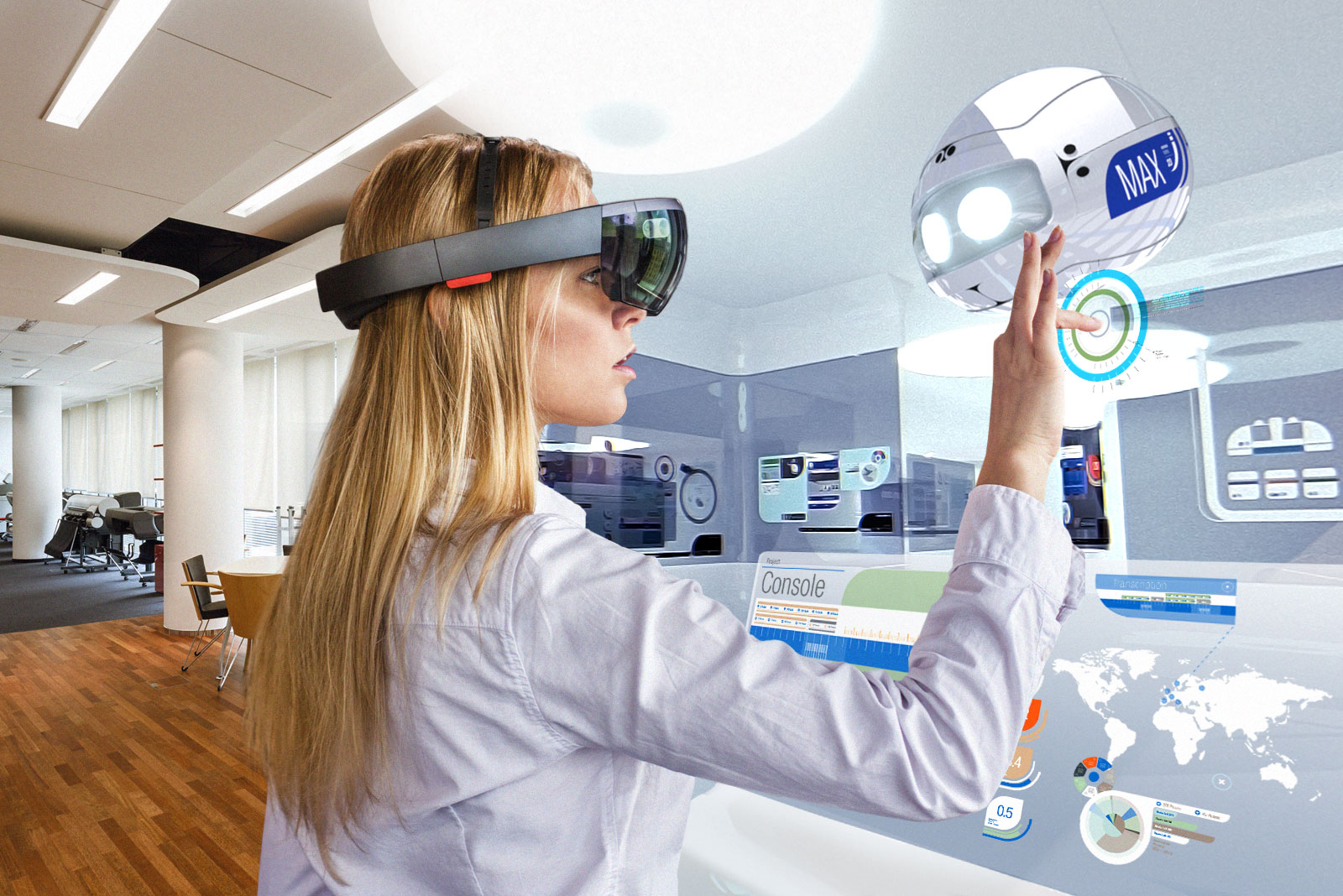PDE Perspectives on Mixed reality – how real and virtual worlds are merging
This article elaborates the real world application and implementation within domain of Product Design Engineering (PDE) Program. Precisely, Reality and virtual reality are increasingly merging, with virtual and augmented reality long since having become more than gimmicks. Matthias Greiner, IT expert for augmented reality at Konica Minolta, explains how new technologies are changing the future of our work.
Source: https://job-wizards.com/en/mixed-reality-how-real-and-virtual-worlds-are-merging/

Mixed reality – how real and virtual worlds are merging
Reality and virtual reality are increasingly merging, with virtual and augmented reality long since having become more than gimmicks. Matthias Greiner, IT expert for augmented reality at Konica Minolta, explains how new technologies are changing the future of our work.
Portrait
Matthias Greiner, Business Development Manager for Emerging Technologies at Konica Minolta
Matthias Greiner is an expert in augmented and virtual reality at the Konica Minolta Business Innovation Centre in Munich. From 2008 to 2016, he worked as a Senior Platform Manager at the AR start-up Metaio, which is now owned by Apple. As Business Development Manager for Emerging Technologies at Konica Minolta, Matthias Greiner is responsible for successful business models for technologies such as AR and VR.

Mr Greiner, you have been heavily involved with virtual reality (VR), augmented reality (AR) and mixed reality, as well as the accompanying virtual technologies such as virtual reality glasses, for ten years. What exactly is it all about?
Matthias Greiner: The term mixed reality describes the idea and the already-ongoing development that reality and virtual reality are merging and mixing with each other. In 2016, the US start-up Magic Leap showed how we can imagine this in a spectacular video. Think of a gymnasium filled with school pupils sitting at the side of an empty playing area looking on – the reality. Then suddenly, in the middle of this real gymnasium, a gigantic, computer-generated virtual humpback whale jumps out of the floor of the gym, and this whale is not real – although it is deceptively realistic – but only exists in virtual reality. For the viewers in the gymnasium, who are wearing an augmented reality headset – a kind of pair of virtual reality glasses – the two realities mix. The gymnasium is augmented with virtual elements, creating the augmented reality.
Aside from the fact that something like that is spectacular – is it really a good idea to merge reality and virtual reality?
Matthias Greiner: Take a look around your office: whether it is the telephone, computer, smartphone, printer or art on the wall – there is now an incredible amount of digital information to accompany every item in reality, for example regarding the material, origin, price, technical details and characteristics, reviews by others, etc. It is about making this additional digital information visible and directly usable for people. Up to now, we have researched this information on our computer or smartphone. That is the current interface between reality and the digital world. The idea of augmented reality is to be shown all this digitally available information as a matter of course without having to search for it on a smartphone. At the same time, the information should be depicted as naturally as possible. Computers and smartphones are two-dimensional interfaces, whereas 3D depiction is more natural. That is why specialists – including us at Konica Minolta – are now working on data glasses and headsets for this purpose.
At IT kessel.17, a trend and innovations information event, you explained how mixed reality and new technologies will change our everyday work.
Matthias Greiner: That’s right. Although I must say: that is an extremely complex topic, as there is not only one new technology per sector and production environment, but many different technologies. When constructing new machines or devices, for example, construction data or design studies can be directly visualised in 3D and discussed; in smart logistics, useful additional information and work instructions can be directly integrated into the field of vision of the user via data glasses. With virtual navigation assistance, smartphone users can navigate through production sites, office buildings and factory premises, or find tools, machine parts and other objects they are looking for without wasting time or getting annoyed. In apprenticeships and training, learning outcomes are reached up to 30% faster via virtual reality training. There are also interesting fields of application in the service and maintenance area. The more natural and user-friendly the way we provide digital data via tailor-made interfaces is, the more efficient and safe work will be in future.
Real and virtual worlds will increasingly merge in future #jobwizards http://bit.ly/2zecY2Z
So our current perception of reality should be optimised with additional virtual input?
Matthias Greiner: That is the idea, but we have to be honest: in some cases, there is a long way to go to reach smooth-running application. Videos such as the one with the whale are spectacular, but we should not forget that the many production and application areas for augmented reality are very complex technically. After all, it is not about entertainment, but achieving added value in the working world of the future. In the productive and professional context in particular, that is not always easy.
Which countries are pioneering the new technologies?
Matthias Greiner: A lot is happening in Europe in the start-up area – in Germany, Austria, France and the United Kingdom, but also in the Netherlands, Poland and the Czech Republic. However, successful start-ups are often sold in the USA.
What is your personal experience of the reactions of users to the new virtual technologies?
Matthias Greiner: That depends how much contact people had already had with the new technology. To begin with, there is often a major ‘wow’ effect and enthusiasm. When it comes to integration of augmented reality into their everyday work, the focus for users is mainly on practical issues of good usability or optical conditions. Unfortunately, these have not yet been resolved in a satisfactory way.
So are people ready for mixed reality?
Matthias Greiner: I think so. After all, the digital data and content is already there in principle – but at the moment we just use it on devices like a mobile phone or tablet. However, that is often laborious. The idea is to get all this interesting and helpful additional information into our direct field of vision in the right context. The tasks ahead for augmented reality experts are to create corresponding intelligent interfaces, e.g. data glasses or headsets, and to find out how the digital information can be presented naturally enough to be optimally usable for us – without us being distracted or overwhelmed by additional virtual information. And, of course, it is the responsibility of all of us to create helpful and sensible augmented reality applications for people in the future – regardless of whether it is in relation to the production process of Industry 4.0, training, or questions relating to design, safety or health. At Konica Minolta, we have been working on appropriately further developing and refining helpful applications for several years. Our aim is to overcome the current obstacles as soon as possible and make AR applications usable in an everyday context.

Comments :